This is nothing to be concerned about. Let's investigate what happens. First I let the event function throw an error to be able to see the call stack:
event_fun <- function(t, y, parms) {
print(t)
stop("test0")
q <<- q +1
y + 1
}
ode_sol <- ode(y = y0, times = times, func = ode_fun, parms = parms,
events = list(func = event_fun, time = c(2)))
traceback()
#7: stop("test0") at #3
#6: events$func(time, state, parms, ...)
#5: Func(times[1], y)
#4: eval(Func(times[1], y), rho)
#3: checkEventFunc(Eventfunc, times, y, rho)
#2: lsoda(y, times, func, parms, ...)
#1: ode(y = y0, times = times, func = ode_fun, parms = parms, events = list(func = #event_fun,
# time = c(2)))
We see that the function was called within a call to checkEventFunc. Let's take a look at that function:
deSolve:::checkEventFunc
#function (Func, times, y, rho)
#{
# tmp <- eval(Func(times[1], y), rho)
# if (length(tmp) != length(y))
# stop(paste("The number of values returned by events$func() (",
# length(tmp), ") must equal the length of the initial conditions vector #(",
# length(y), ")", sep = ""))
# if (!is.vector(tmp))
# stop("The event function 'events$func' must return a vector\n")
#}
#<bytecode: 0x00000173fc02a080>
#<environment: namespace:deSolve>
It is obvious (also from its name) that the only purpose of this function is to check that the event function was defined properly.
Now let's check the other call:
event_fun <- function(t, y, parms) {
print(t)
if (t > 0) stop("test1")
q <<- q +1
y + 1
}
ode_sol <- ode(y = y0, times = times, func = ode_fun, parms = parms,
events = list(func = event_fun, time = c(2)))
traceback()
#5: stop("test1") at #3
#4: events$func(time, state, parms, ...)
#3: (function (time, state)
# {
# attr(state, "names") <- Ynames
# events$func(time, state, parms, ...)
# })(2, 0.0676677861933153)
#2: lsoda(y, times, func, parms, ...)
#1: ode(y = y0, times = times, func = ode_fun, parms = parms, events = list(func = event_fun,
# time = c(2)))
We can see that this is a call to the event function that is actually used by the solver.
You can also compare the solutions with and without event:
event_fun <- function(t, y, parms) {
y + 1
}
ode_sol_with <- ode(y = y0, times = times, func = ode_fun, parms = parms,
events = list(func = event_fun, time = c(2)))
ode_sol_without <- ode(y = y0, times = times, func = ode_fun, parms = parms)
plot(ode_sol_with, xlab = "time", ylab = "y", ylim = c(0, 1))
par(new = TRUE)
plot(ode_sol_without, xlab = "time", ylab = "y", ylim = c(0, 1), col = "red", lty = 2)

Clearly, both solutions are identical before the event time.
